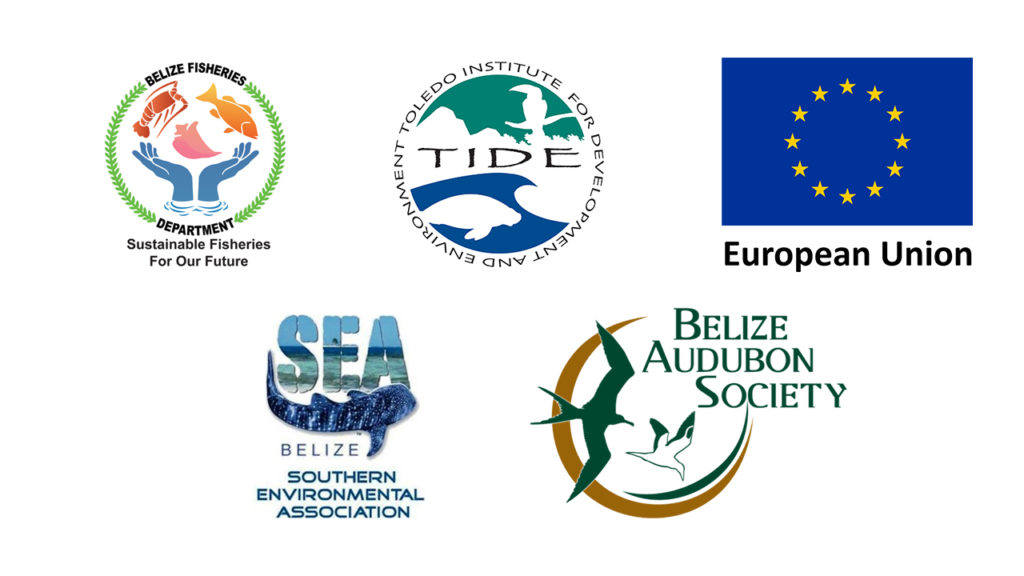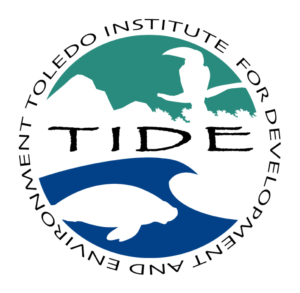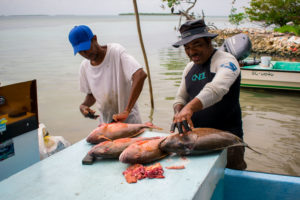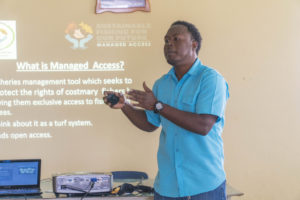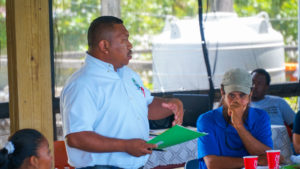European Union Project Entitled: "Restoring Fisheries in the Mesoamerican Barrier Reef System" 2017 - 2020
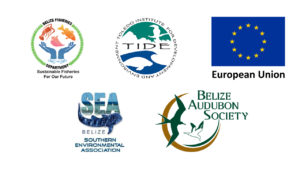 The “Restoring Fisheries in the Mesoamerican Barrier Reef System Project” is a 3-years, 1.3 Million Euros project being funded by the European Union. It falls under Lot 7 of the European Union “Contributing to preserving marine and coastal biodiversity in the Caribbean Sea basin.”
The “Restoring Fisheries in the Mesoamerican Barrier Reef System Project” is a 3-years, 1.3 Million Euros project being funded by the European Union. It falls under Lot 7 of the European Union “Contributing to preserving marine and coastal biodiversity in the Caribbean Sea basin.”
It is being coordinated by the Toledo Institute for Development and Environment (TIDE) in partnership with the Belize Fisheries Department (BFD), the Belize Audubon Society (BAS) and the Southern Environmental Association (SEA).
The project targets fifteen (15) coastal communities, covers four (4) of the nine (9) Managed Access Zones and operated from five (5) enforcement bases; Zone 3, the South Water Caye Marine Reserve, South Water Caye enforcement base and Gladden Spit and Silk Cayes Marine Reserve, Little Water Caye enforcement base, Zone 4, Sapodilla Caye Marine Reserve, Hunting Caye enforcement bases, Zone 5, Port Honduras Marine Reserve, Abalone Caye enforcement base and Zone 7, Half Moon Caye Natural Monument, Half Moon Caye enforcement base.
The main Project Activities:
- Stakeholder participation in governance
- Education and Outreach
- Enforcement
- Fisheries Science
- Institutional Strengthening
SMART Training
With funding from the European Union, trained 37 persons from 4 organizations in the operation of SMART software to capture field data for use in a nationwide monitoring program.
The objectives of the training were:
- To provide participants with an overview of SMART and CyberTracker software, and the benefits of their application.
- To introduce participants to the CyberTracker app and how to use it to gather patrol data.
- With participants, review data model and seek feedback for customization towards organization needs.
- To train participants to login to SMART and upload collected Data.
- To conduct scenario based practical exercise for participants better understanding of concepts.
- Train protected areas managers to independently administer SMART and troubleshoot any SMART issues.
- Navigate comfortably through the software and hardware.
- Create queries and run reports.
